An expert trainer shares a six-move dumbbell workout you can use again and again to build full-body strength and muscle at home
Strengthen your joints and muscles while boosting your mood
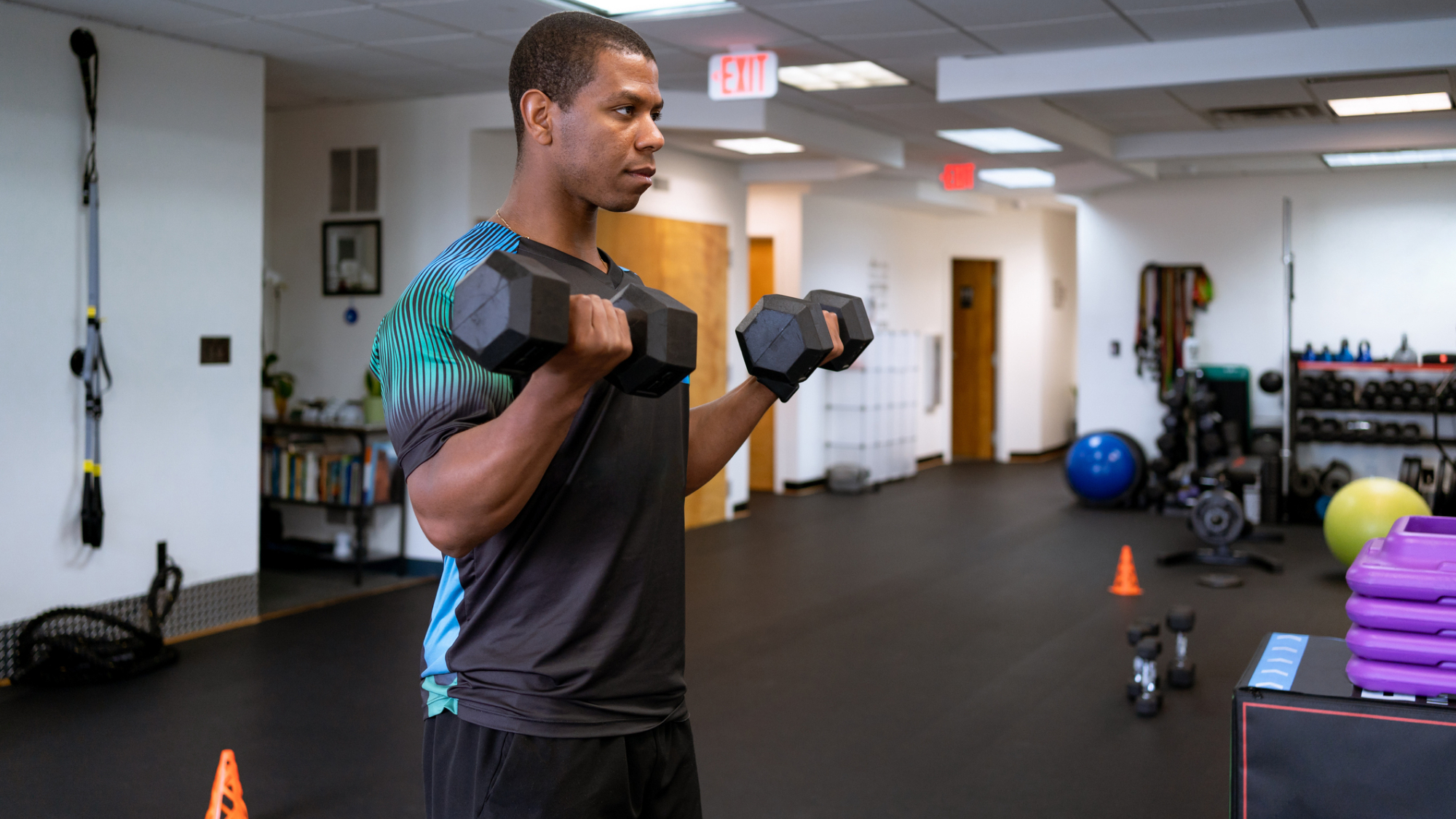
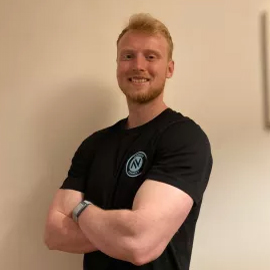
Finding a free moment to work out can be a struggle, so it’s important to make the most of the time you do set aside to exercise.
For an efficient and effective session, Vigor Ground Fitness and Performance Owner & Vagaro Brand Partner Luka Hocevar suggests full-body strength training workouts. He’s even shared a sample six-move dumbbell session for Fit&Well readers to try.
"This workout will help you build strength, muscle, bone density, confidence and improve your mental health—no-one ever feels worse after doing a workout. Also, it's time-effective, as you can complete it in just 45 minutes," he says.
How to do Luka Hocevar’s full-body dumbbell workout
- 1A. Dumbbell Romanian deadlift 3x8
- 1B. Dumbbell bench press 3x8
- 2A. Dumbbell reverse lunge 3x12 (on each leg)
- 2B. Single-arm bent-over dumbbell row 3x12 (on each arm)
- 3A. Dumbbell heels-elevated goblet squat 3x15
- 3B. Dumbbell curl 3x10
The exercises listed above are split into pairs or "supersets". Exercises labeled with the same number should be performed together; first do the move labeled "A" then do the move labeled "B" with minimal rest in between. Only once both exercises have been completed do you take the prescribed rest.
So, for the first superset you would do eight dumbbell Romanian deadlifts, eight dumbbell bench presses, then rest for 90 seconds before repeating this sequence. Once you’ve done this three times, move on to the next superset.
1A. Dumbbell Romanian deadlift
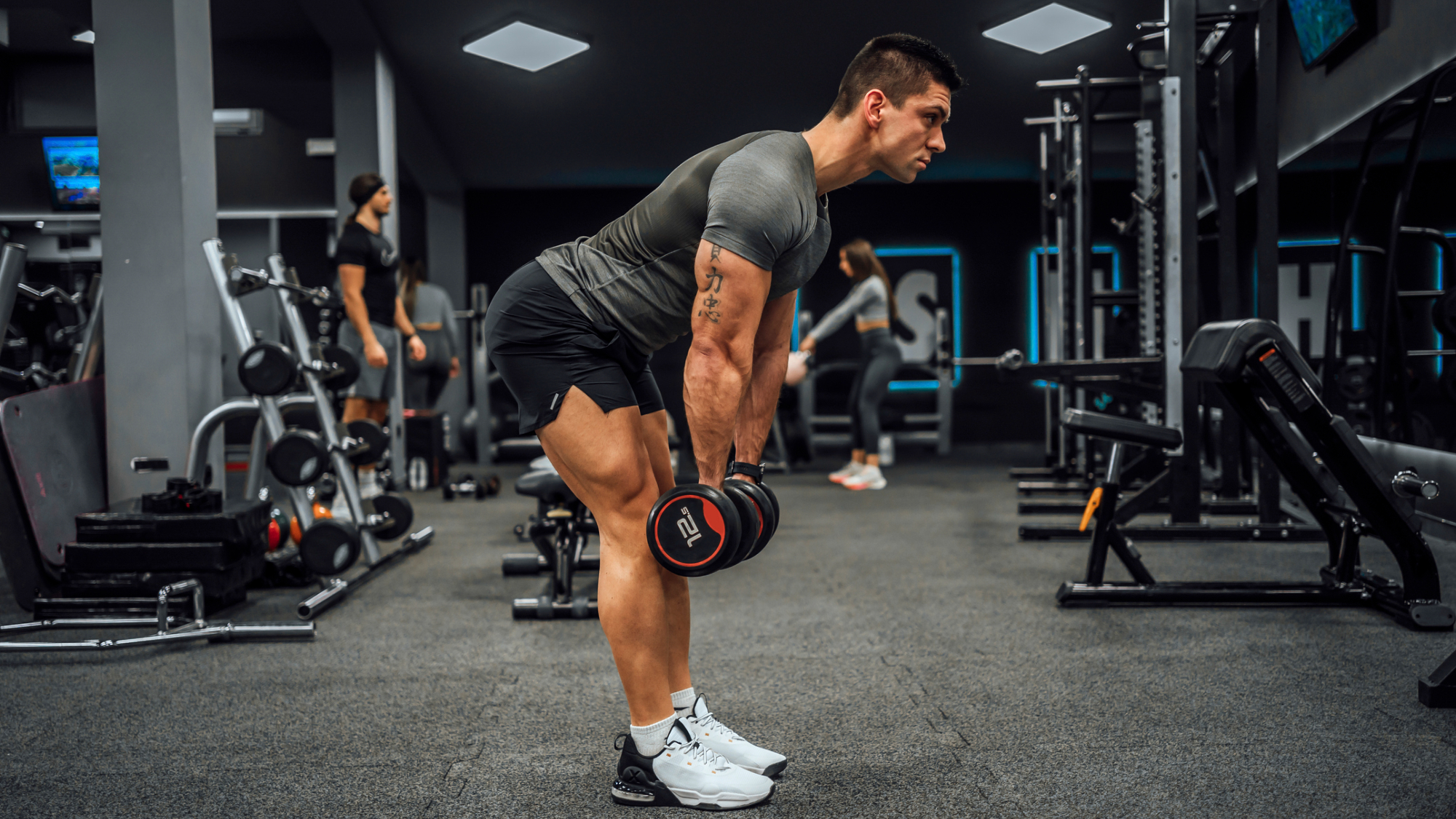
Sets: 3 Reps: 15 Rest: 0 seconds
- Stand upright with your feet hip-width apart and a dumbbell in each hand.
- Keeping your back flat and your knees soft, hinge at the hips to bend over. Your arms should stay straight and the dumbbells should lower along the front of your legs.
- Once you’ve lowered the dumbbells down your shins as far as your hamstrings (the muscles on the back of your thighs) allow while keeping your back straight, squeeze your glutes and drive through the floor to stand back upright.
1B. Dumbbell bench press
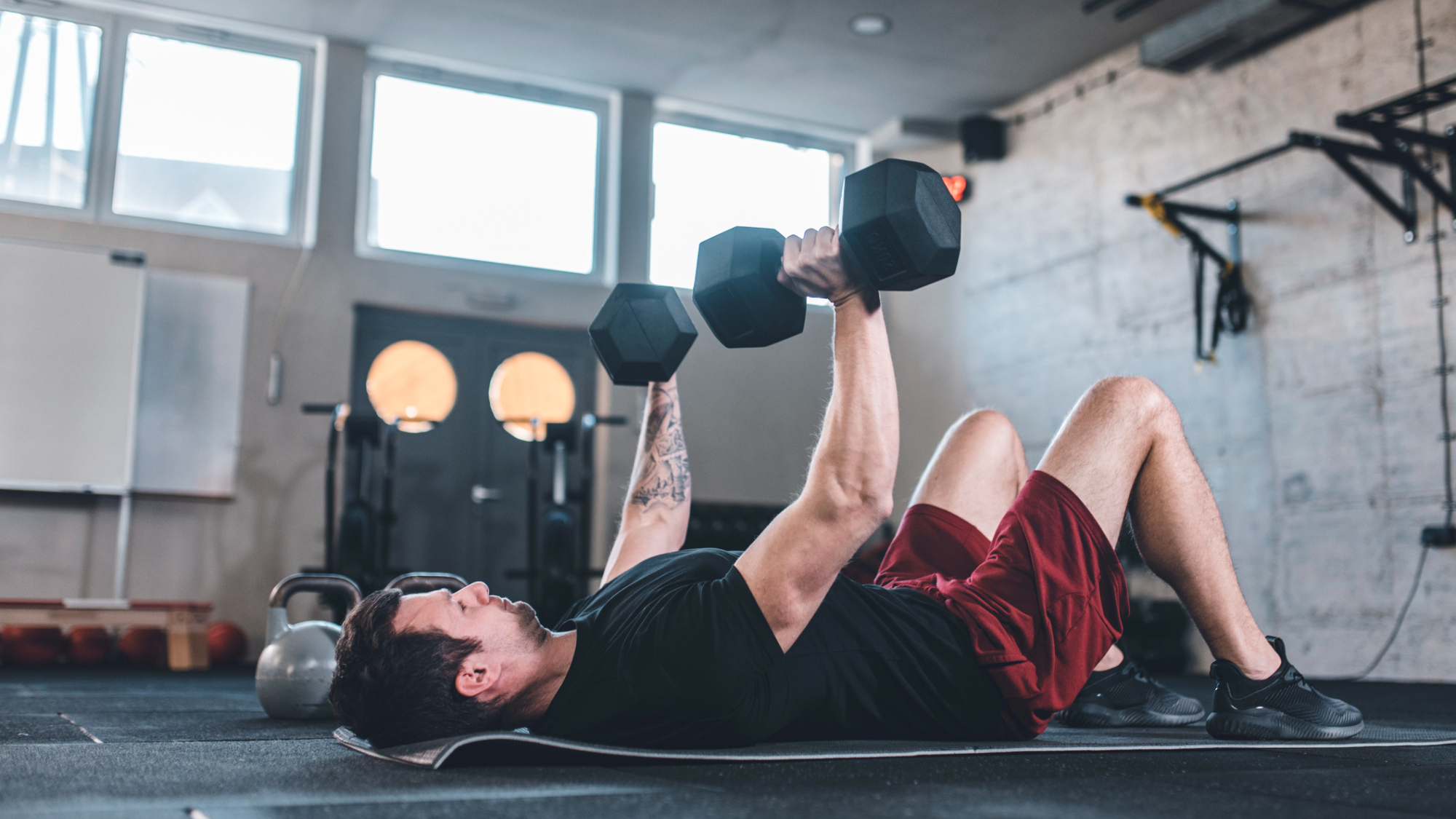
Sets: 3 Reps: 12 (on each arm) Rest: 90 seconds
Get the Fit&Well Newsletter
Start your week with achievable workout ideas, health tips and wellbeing advice in your inbox.
- Lie on your back on a flat weight bench, or on the ground if you don’t have one. Holding a dumbbell in each hand, extend your arms straight up towards the ceiling so the dumbbells are directly above your chest.
- Retract your shoulder blades. Think about pulling them back and down, as if you were trying to put them into the back pockets of a pair of jeans.
- Keeping your elbows quite close to your torso, lower the dumbbells to your chest then push them back up to the starting position.
2A. Dumbbell reverse lunge
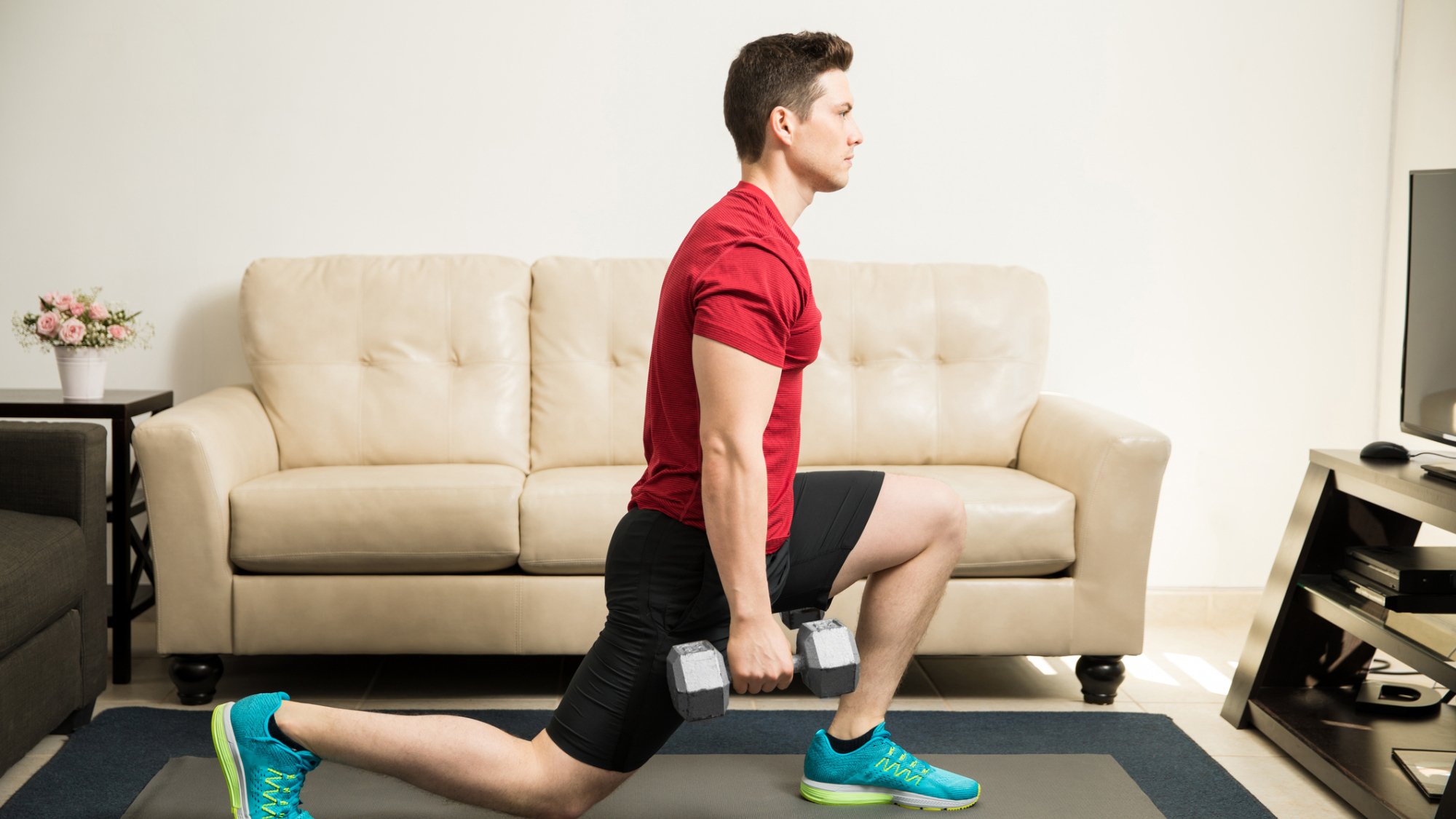
Sets: 3 Reps: 15 Rest: 0 seconds
- Stand upright with your arms by your side and a dumbbell in each hand.
- Keeping your torso upright, step backwards with your right foot and lower your right knee towards the floor until both knees roughly form a right angle.
- Drive through your left foot to step back up to the starting position, then repeat on the other leg.
2B. Single-arm dumbbell row
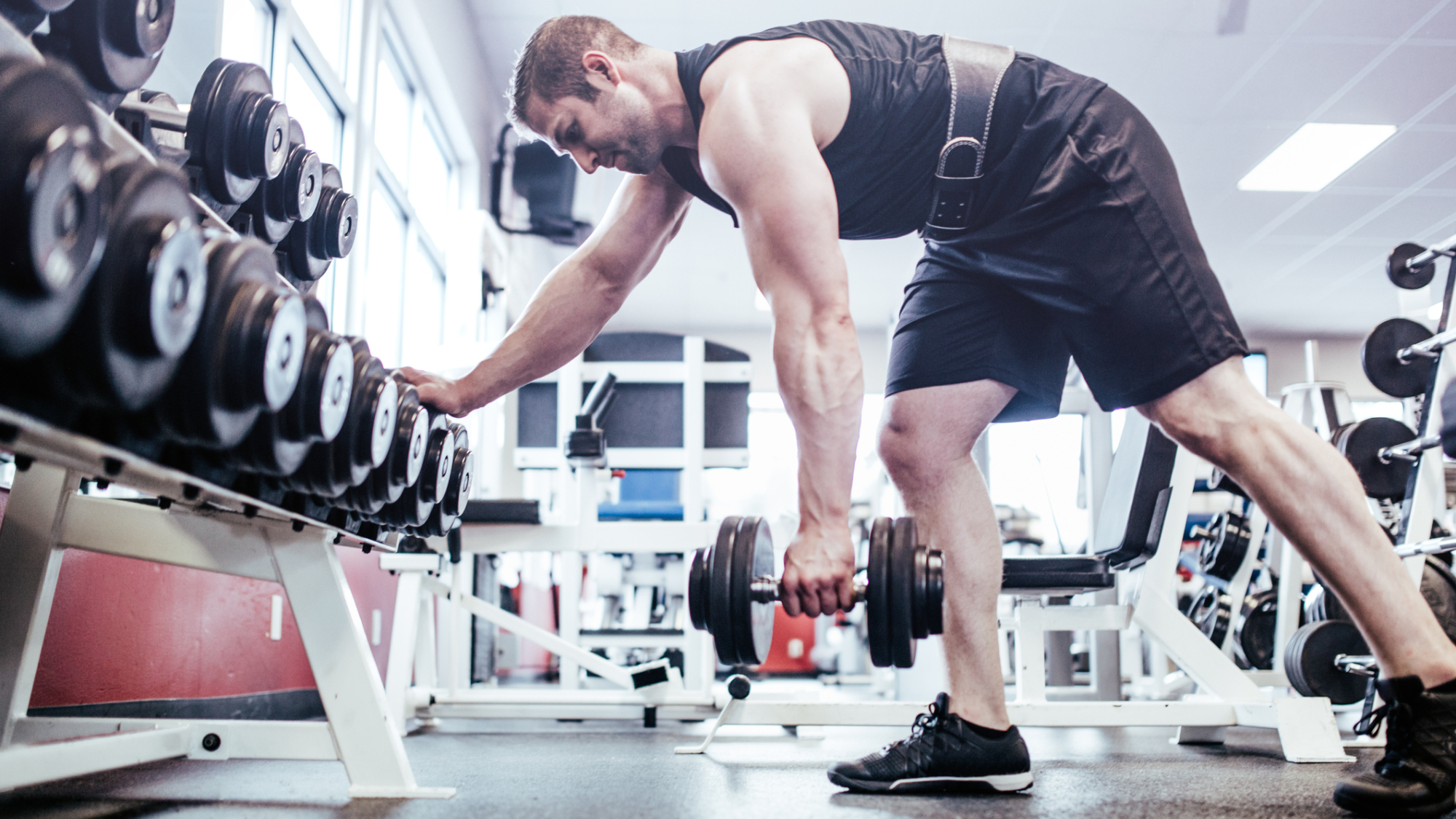
Sets: 3 Reps: 12 (on each arm) Rest: 90 seconds
- Stand in a staggered stance with your left foot forward and a dumbbell in your right hand. Keeping your back flat, hinge at the hips and bend forwards until your torso forms roughly a 45° angle with the floor. Allow the hand holding the dumbbell to hang down towards the floor.
- Place your free hand on a stable, knee-height surface in front of you for support.
- Retract your right shoulder blade then drive your elbow upwards to row the dumbbell to the bottom of your ribcage.
- Slowly lower the dumbbell back to the starting position. Once you’ve completed all prescribed repetitions on one arm, switch sides and repeat.
3A. Dumbbell heels-elevated goblet squat
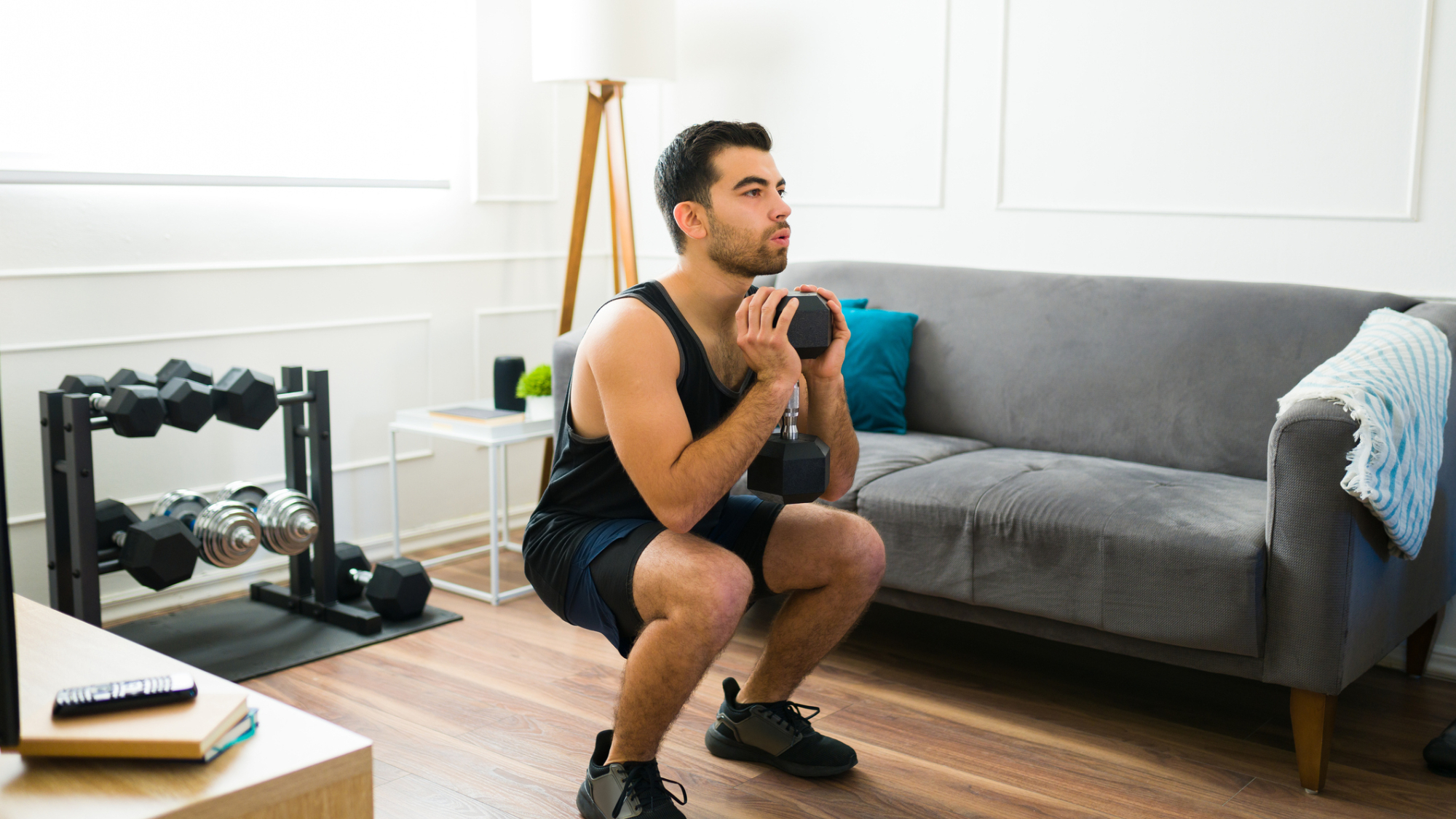
Sets: 3 Reps: 15 Rest: 0 seconds
- Find two small platforms roughly one inch high such as weight plates or sturdy books. Stand with your heels on these platforms, your feet roughly hip-width apart and your toes pointed outwards slightly, holding one head of a dumbbell in both hands tight to your chest.
- Keeping your spine neutral and your chest up, push your hips back and bend your knees to squat down as low as you comfortably can.
- Drive through your heels to return to the starting position.
3B. Dumbbell curls

Sets: 3 Reps: 12 (on each arm) Rest: 90 seconds
- Stand upright with your arms by your side, a dumbbell in each hand and your palms facing forwards.
- Keeping your elbows tucked into your sides, curl both dumbbells up towards your shoulders, then control them back to the starting position.
Why is this workout effective?
The body is built to move in a range of different ways, allowing it to meet the demands of daily life. So, if you want a truly functional strength training workout, the exercises involved should do the same.
Hocevar explains that the moves in this routine cover most of the major movement patterns the body can follow; pushing, pulling, squatting, hinging and lunging.
Working all these types of movement not only recruits a wide variety of muscles, but also strengthens your body in various positions, leaves you less susceptible to injury and boosts your ability to to carry out everyday tasks like taking out the trash or bending down to pick something up.
How to use this workout
You can do this workout up to three times per week. But, as it’s a full-body strength training session that will be quite taxing on your body, you’ll want to leave at least a day between workouts to allow your muscles to recover and grow.
If you are looking to repeat this workout, Hocevar highlights the importance of the progressive overload principle. This simply means making the exercises progressively more challenging over time, either by increasing the number of sets and repetitions you’re performing, or upping the weight you’re lifting (adjustable dumbbells are a great at-home training tool for this).
Progressive overload will provide the stimulus needed for your body to adapt, build muscle and grow stronger.

Harry Bullmore is a Fitness Writer for Fit&Well and its sister site Coach, covering accessible home workouts, strength training session, and yoga routines. He joined the team from Hearst, where he reviewed products for Men's Health, Women's Health, and Runner's World. He is passionate about the physical and mental benefits of exercise, and splits his time between weightlifting, CrossFit, and gymnastics, which he does to build strength, boost his wellbeing, and have fun.
Harry is a NCTJ-qualified journalist, and has written for Vice, Learning Disability Today, and The Argus, where he was a crime, politics, and sports reporter for several UK regional and national newspapers.
-
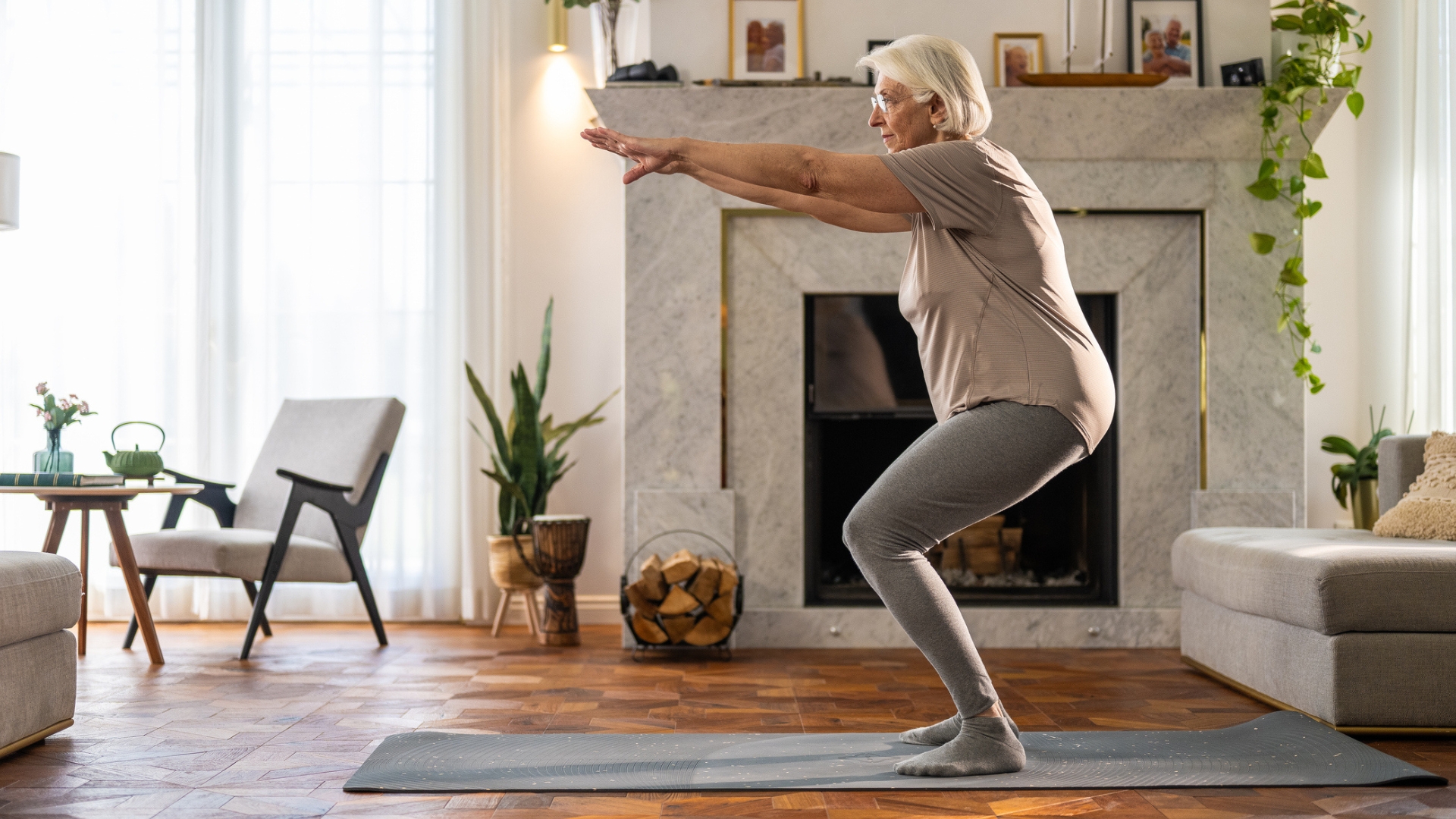 The three Pilates exercises every beginner should start with, according to an expert instructor
The three Pilates exercises every beginner should start with, according to an expert instructorA sequence that will take you no more than 10 minutes
By Alice Porter
-
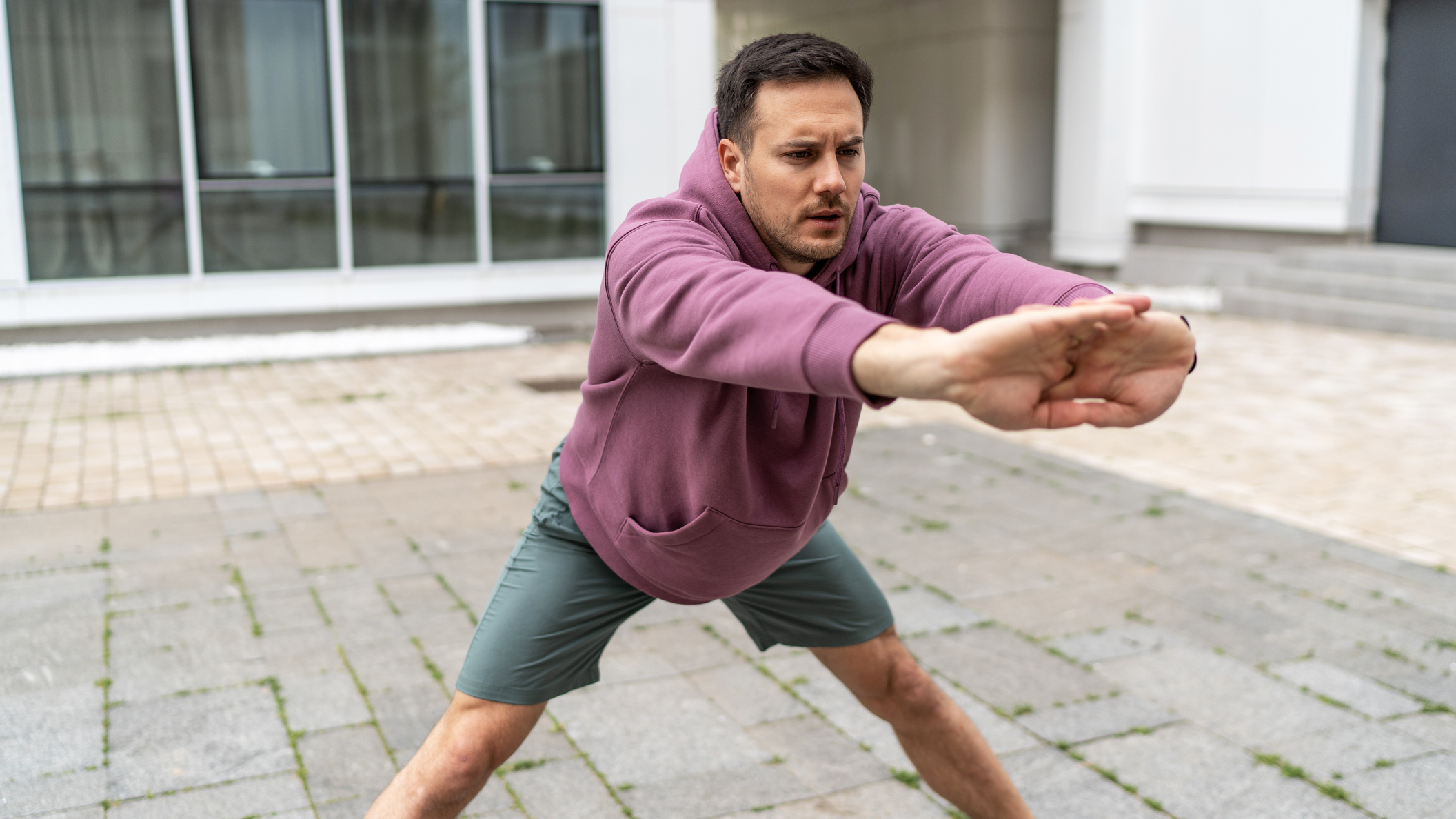 Chris Hemsworth swears by something called Foundation Training to keep back injuries at bay—here's how to master one of its core movements
Chris Hemsworth swears by something called Foundation Training to keep back injuries at bay—here's how to master one of its core movementsTime to introduce this into your daily routine
By Sam Rider